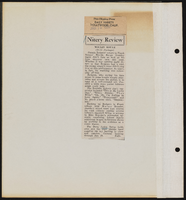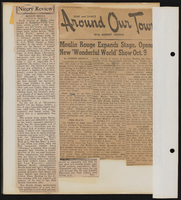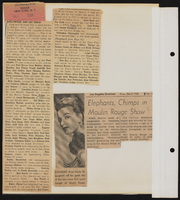Search the Special Collections and Archives Portal
Search Results
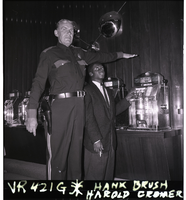
Film negative of Harold "Stumpy" Cromer and policeman Hank Brush, July 30, 1955
Date
Description
Black and white negative of policeman Hank Brush clowning around at the Moulin Rouge slot machines with Harold "Stumpy" Cromer of comedy team Stump and Stumpy, dated July 30, 1955.
Image
Mary Louise Williams oral history interview
Identifier
Abstract
Oral history interview with Mary Louise Williams conducted by Claytee D. White on June 19, 1998 for the Women's Research Institute of Nevada (WRIN) Las Vegas Women Oral History Project. In this interview Mary Louise Williams discusses her dance career, working at the Moulin Rouge Hotel and Casino, visiting Las Vegas, Nevada numerous times throughout her life, and why she retired in Las Vegas.
Archival Collection
Andrew Jackson III oral history interview
Identifier
Abstract
Oral history interview with Andrew Jackson III conducted by Claytee D. White on September 26, 2000 for the UNLV University Libraries Oral History Collection. In this interview, Jackson discusses his family background and his early life in Arkansas and moving to Las Vegas, Nevada in the late 1940s. He remembers the Cotton Club on the Westside, entertainers performing on the Westside, and racial tensions in Las Vegas at the time. Jackson talks about being a casino dealer at the Moulin Rouge, its closure in 1955, and integration on the Las Vegas Strip. Lastly, Jackson discusses being the only African American dealer at a major Las Vegas hotel, and the switch from privately-owned casino properties to corporate ownership.
Archival Collection
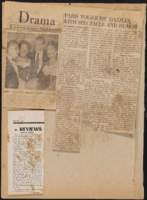
Donn Arden scrapbook 03
Date
Archival Collection
Description
Series 7: Scrapbooks. Press clippings and publicity including advertisements, photographs, show reviews and programs on Arden's shows at the Moulin Rouge, Desert Inn, Latin Quarter (New York and Miami), and C'est Magnifique (Paris Lido). Stars featured include Noel Coward, Betty Grable, Helen Traubel, Gordon McRae, and Marie MacDonald. Also includes a typescript letter signed by Joan Crawford. Some press clippings are in French.
Mixed Content
Dr. William H. Bailey oral history interview
Identifier
Abstract
Oral history interview with William H. "Bob" Bailey conducted by A. D. Hopkins on February 17, 1999 for the Las Vegas Review-Journal First 100 Oral History Project. In the interview, Bailey discusses his birth in Detroit, Michigan and his early life and education in Cleveland, Ohio. Bailey moved to Las Vegas, Nevada in 1955. He describes racial segregation in the neighborhoods he lived in, and in Las Vegas in general. He also talks about entertainers and business associates he worked with at the Moulin Rouge in Las Vegas. Other subjects Bailey discusses include the Great Society programs during the 1960s, affirmative action during the 1970s, the Las Vegas Black Chamber of Commerce, and minority business growth and development in Las Vegas.
Archival Collection

